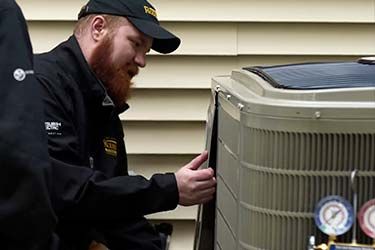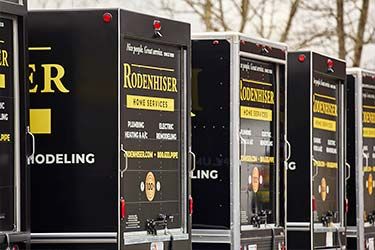



Ventilating fans often don’t receive the attention they deserve — unless they're installed incorrectly and/or break down. Working quietly behind the scenes, ventilating fans route odors and moisture out of the home — moisture that might otherwise result an uncomfortable home environment, mildew and mold growth and poor indoor air quality.

Some of the primary types of ventilating fans include:
Sizing the fans involves knowing the air changes per hour (ACH) required for the space in question. As a general rule, experts generally match a fan’s capacity, or cubic feet per minute (CFM), to meet these air exchanges:
Installers also follow this general rule when sizing: For every square footage of space, the fan should supply 1 CFM. Therefore, if your bathroom is 50 square feet, the ventilating fan should supply 50 CFM. Sizing kitchen ventilating fans involves matching the stove’s size and location to supply 100 CFM for each 10,000 BTUs (or British thermal units) the stove’s capacity supplies.
Without ventilating fans in place, your home’s environment will suffer. Exhaust fans offer proven benefits like:
Rodenhiser Plumbing, Heating & Air Conditioning is pleased provide HVAC services to the Route 495/128 area of Medway MA. Give us a call today for inquiries about ventilating fans, or any other home-comfort issues. We’re happy to help.
Image via Shutterstock.com





Both Alex and Patrick were knowledgeable, courteous, and professional. They made a change that might have solved the recent problem and have structured a more complete solution. We agreed to this...
Mike was thorough, thoughtful and considerate. Covered their shoes before entering, surveyed my issue and provided an explanation of the services and costs. Great Job!
Alex did a great job providing an explanation of the services provided and went out of his way to offer assistance/advice on other issues outside of our scheduled maintenance visit.
Brian did an excellent job inspecting our 18-year old boiler and replacing some of the accessory hardware that needed it, he also adjusted the outgoing hot water settings for our radiators and...
Rodenhiser is my one stop shop!!! They take care of my HVAC, electrical, and plumbing issues & are always helpful addressing any questions I may have about the systems in my house! Everyone...
Chris G. and Nick V. showed up bright and early at 8am to fix my water heater issue. They were on time, polite and were able to fix an issue that has been plaguing my house for a good year. They...
When you are looking for plumbing, electrical, heating or air conditioning in the Route 495 / 128 area, you will be delighted that you called Medway MA' trusted choice since 1928.
With a total dedication to professional workmanship and excellent service, discover why families and businesses continue to trust Rodenhiser after generations of service







